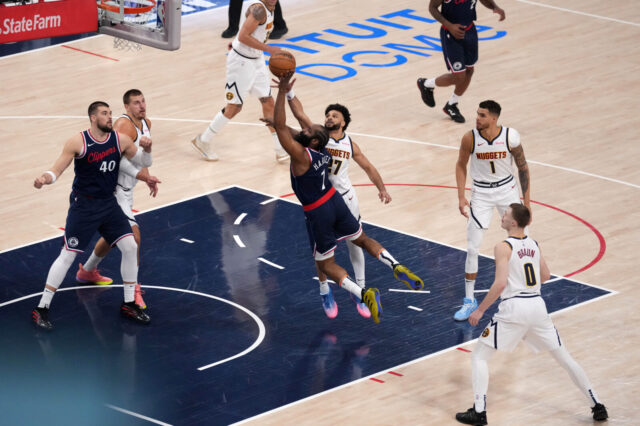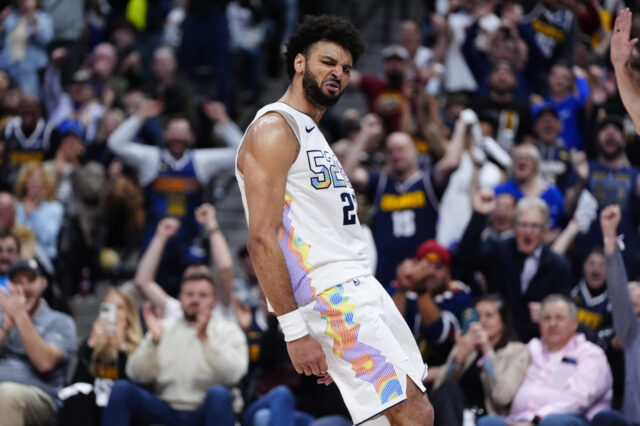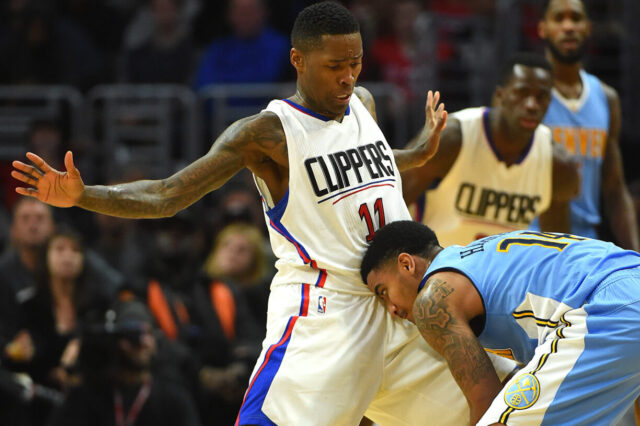For the second straight season, it looks like the Denver Nuggets will see a reduction in pace of play.
While the NBA continues to trend into a faster and faster league with emphasis on efficient shots early in possessions, it has become easier to see which franchises are deciding to go the other direction. Whether due to player personnel, team philosophy, or another extenuating circumstance, most teams decide how fast or slow they want to play.
For the Sacramento Kings in 2018-19, the goal of using De’Aaron Fox’s afterburners for shoes meant tailoring their system to playing at top speed. The Kings were third in PACE last year, an estimate of the number of possessions a team plays every game. This speed of play helped Sacramento’s offensive efficiency move from 29th in 2017-18 to 17th in 2018-19 with much of the same offensive personnel, but the defensive jump (27th to 21st) was far less noticeable.
The Nuggets have decided to go the other direction. Even while playing in the Mile High City, famous for tiring out opponents by running hard in the thin air, the Nuggets are no longer playing fast, and the pace of play directly connects to their effectiveness on both ends of the court.
Here are Denver’s pace of play numbers by year under head coach Michael Malone compared to the NBA team median:
Nuggets Pace of Play by year (NBA team median)
2015-16 – 96.34, 17th (96.575)
2016-17 – 99.18, 6th (96.755)
2017-18 – 97.69, 15th (97.68)
2018-19 – 98.49, 26th (100.475)
2019-20 – 99.56, 27th (104.355)
Pace of play numbers tend to run higher earlier in the season, but Denver’s trend juxtaposed to the rest of the NBA is understandable. With Emmanuel Mudiay and Jameer Nelson at the helm, along with a lighter, even more pass happy Nikola Jokic in 2016-17, the Nuggets operated at their fastest pace in the Michael Malone era, scoring points at will in an egalitarian offense built around players who could not (or would not) defend at a high level. Sure, Nikola Jokic, Jamal Murray, Gary Harris, and Will Barton have figured it out, but every other primary contributor on that roster is gone, from Danilo Gallinari to Jameer Nelson to Kenneth Faried.
This content is no longer available.
Something broke for Michael Malone in the 2017-18 season. The Nuggets had brought in Paul Millsap to help stabilize the defense, but being out for 43 games with a torn ligament in his wrist eased the transition Malone would have liked. Denver needed to grow more defensive, even if it meant slowing down and altering the beautiful offensive game forged in Jokic’s personality. Denver hasn’t returned to an elite offensive level since.
And yet, replacing those contributors over the years has yielded Paul Millsap, Monte Morris, and Jerami Grant. These defensive minded contributors that can operate at a slower pace offensively while focusing on improving the defense. So far, those changes have helped. Through two games in the 2019-20 season, there’s no reason to focus in on Offensive and Defensive Ratings, but the 2018-19 season saw the Nuggets defense move from 23rd to 10th in Defensive Rating.
Are the Nuggets performing better defensively because they’ve slowed the game down for their primary contributors or because those primary contributors are more invested in quality defense? The answer probably falls somewhere in the middle, but it’s clear that operating at a slower pace has impacted the Nuggets positively on the less glamorous end.
Let’s see if the small sample size holds up throughout the year.


